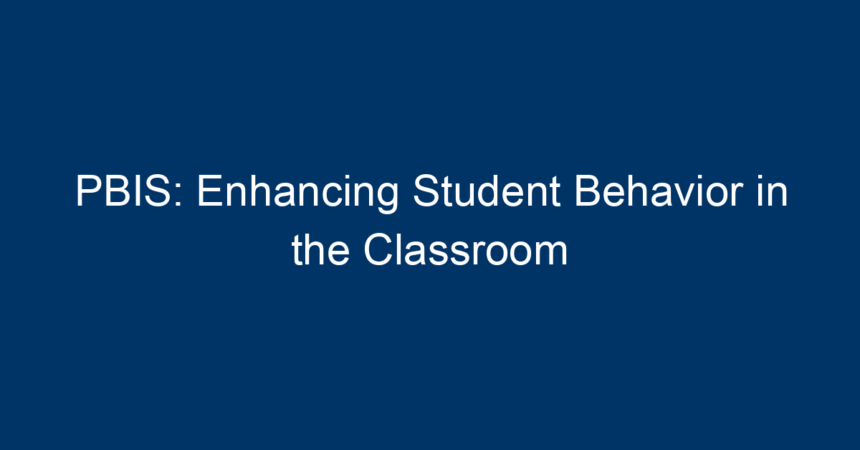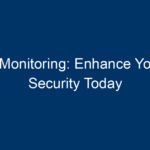In today’s educational landscape, creating an enriching environment that promotes positive student behavior is more crucial than ever. One strategy gaining traction among educators is PBIS, or Positive Behavioral Interventions and Supports. This framework offers a structured approach to improve students’ behavior, enhance their academic performance, and foster a positive school climate. In this article, we will delve into what PBIS is, its core components, practical implementation strategies, and how it can lead to lasting benefits in the classroom.
Understanding PBIS: What is It?
PBIS stands for Positive Behavioral Interventions and Supports. It is a proactive approach to establishing the necessary social culture and behavioral supports for all students in a school to achieve social, emotional, and academic success. This multi-tiered system provides a framework for schools to promote positive behavior, reduce disciplinary issues, and enhance student engagement. By focusing on prevention rather than punishment, PBIS aims to create a supportive environment where students can thrive.
The Core Principles of PBIS
PBIS is centered around several key principles:
-
Prevention: Instead of waiting for negative behavior to arise, PBIS emphasizes preventative measures. This includes teaching students how to behave in specific situations and actively recognizing positive behavior.
-
Data-Driven Decision Making: Schools utilizing PBIS rely heavily on data to assess their approach to behavior management. This involves tracking behavioral incidents and student engagement to tailor interventions.
-
Tiered Support System: PBIS employs a three-tiered framework that includes universal interventions for all students, targeted interventions for at-risk students, and individualized support for those with high needs.
- Positive Reinforcement: PBIS encourages the use of positive reinforcement strategies to reward appropriate behaviors and motivate students to adhere to expected behaviors.
The Three Tiers of PBIS
Understanding the multi-tiered system of PBIS is essential for effective implementation. Each tier serves a specific purpose in promoting positive behavior.
Tier 1: Universal Interventions
In the first tier, all students receive the same level of support. Universal interventions focus on teaching and reinforcing expected behaviors in all school settings. This includes:
-
Establishing Defined Expectations: Clearly outline behavioral expectations, such as showing respect, being responsible, and practicing safety. Schools can create a concise list of behaviors expected in various settings (classroom, hallway, cafeteria).
-
Regular Instruction: Teach students these behavioral expectations through lessons and role-playing activities.
- Consistent Recognition: Acknowledge and reward students for demonstrating positive behaviors through praise, incentives, or school-wide recognition programs.
Tier 2: Targeted Interventions
The second tier addresses students who are at risk of behavioral challenges. Targeted interventions are usually small group strategies. Key components include:
-
Behavioral Check-Ins: Provide regular feedback to students, allowing them to reflect on their behavior and progress.
-
Social Skills Training: Implement programs that teach specific social skills to help students better interact with peers and teachers.
- Structured Groups: Establish small group meetings to discuss challenges, encouraging peer support and communication.
Tier 3: Individualized Support
For students who demonstrate ongoing behavioral difficulties, Tier 3 entails comprehensive interventions tailored to meet individual needs. Strategies include:
-
Functional Behavioral Assessments (FBA): Conduct FBAs to understand the underlying causes of challenging behavior.
-
Individualized Behavior Support Plans (BSP): Develop and implement personalized plans outlining specific interventions and support for the student, including frequent check-ins and progress monitoring.
- Collaboration with Support Services: Engage with school counselors, psychologists, and other professionals to provide holistic support.
Implementing PBIS in the Classroom
Successfully integrating PBIS into classroom practices requires commitment and collaboration. Here are actionable steps teachers can take to implement PBIS effectively:
1. Establish Clear Expectations
From the first day of school, it is vital to set clear behavior expectations. Define what respectful, responsible, and safe behavior looks like in your classroom. Use visuals and anchor charts to help students remember these expectations.
2. Use Positive Reinforcement
Shift the classroom culture from focusing on what students do wrong to celebrating what they do right. Positive reinforcement might include verbal praise, reward systems, or small incentives for demonstrating expected behaviors. This approach boosts student morale and encourages a sense of belonging.
3. Collect and Analyze Data
Monitor student behavior routinely to inform your practices. Tools such as behavior charts or observation notes can provide valuable insights into patterns. Use this data to adjust your teaching strategies and provide targeted support where necessary.
4. Engage Families
Involve parents and guardians in the PBIS process. Keep them informed about classroom expectations and how they can support their children at home. Consider hosting workshops or information sessions to discuss the importance of PBIS and provide resources.
5. Foster a Collaborative Climate
Create a supportive classroom environment by encouraging collaboration among students. Group activities and team-building exercises not only promote positive social interactions but also alleviate anxiety, fostering a welcoming atmosphere conducive to learning.
The Benefits of PBIS
Implementing PBIS brings a plethora of benefits, both for students and educators. Here are some of the most impactful outcomes:
1. Improved Student Behavior
The structured framework of PBIS leads to a noticeable reduction in disciplinary incidents. By teaching and reinforcing positive behaviors, students are more likely to conform to classroom expectations.
2. Enhanced Academic Performance
With fewer behavioral disruptions, teachers can focus more on instruction, leading to improved academic outcomes. Research indicates that schools with effective PBIS implementation often see higher levels of student achievement.
3. Increased Student Engagement
Students in a positive school environment are more engaged in their learning. PBIS promotes a sense of belonging and satisfaction, which correlates with heightened interest in classroom activities.
4. Better Relationships
PBIS fosters positive relationships among students, teachers, and parents. By promoting understanding and communication, schools create a community that supports student success.
Conclusion: Taking Action with PBIS
In a world where student behavior directly impacts the learning environment, implementing PBIS is a powerful step toward fostering a positive classroom climate. By systematically addressing behavioral issues and reinforcing positive behaviors, educators can significantly enhance both student well-being and academic performance.
Actionable Insights:
-
Start Small: Even minor adjustments to your classroom behavior management can yield positive results. Begin by implementing universal expectations and gradually build toward a comprehensive PBIS approach.
-
Involve the Whole School: To maximize the effectiveness of PBIS, ensure that staff across all grade levels and departments are on board and collaboratively reinforcing the same expectations.
- Commit to Continuous Improvement: Regularly assess the effectiveness of your PBIS practices and be willing to adjust based on data and feedback.
PBIS isn’t just a framework; it’s a commitment to nurturing a supportive and dynamic educational culture. By prioritizing positive behaviors, schools can transform the way students learn, grow, and thrive.




